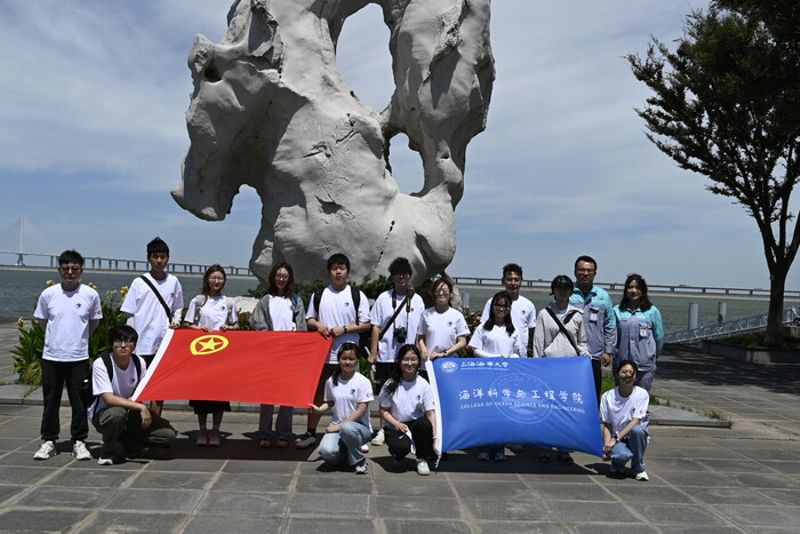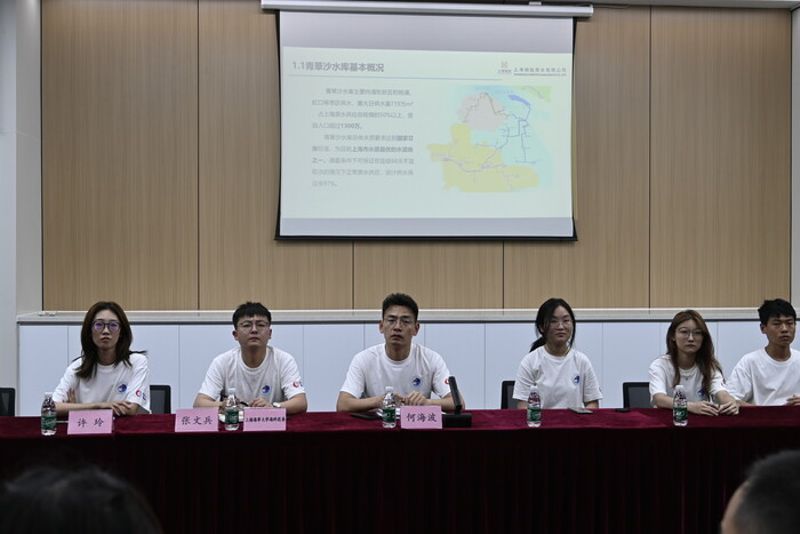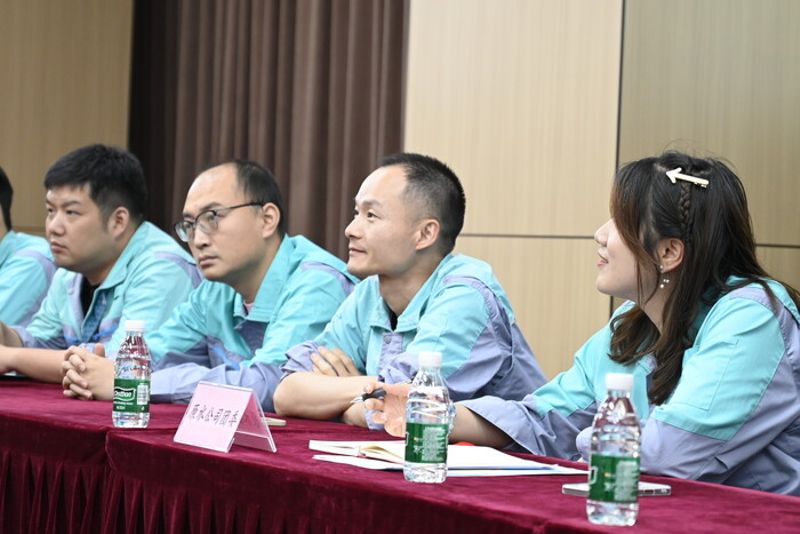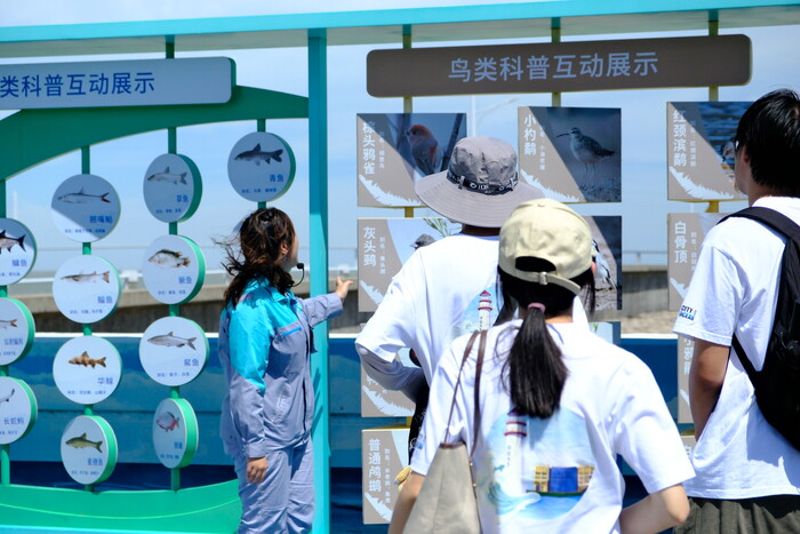Guard the "Source of Life" for Tens of Millions of Citizens and Decode the Smart Code of a World-Class Water Source. Recently, led by teachers He Haibo, Zhang Wenbing and Xu Ling, the "Back to the Source · Light" Practice Team of the College of Ocean Science and Engineering entered Shanghai Qingcaosha Reservoir, launching an in-depth research trip to explore how this super reservoir strengthens the urban water supply safety line with the power of technology and ecology.
Qingcaosha Reservoir, a "water engineering miracle" conceived in the late 1980s, went through over 20 years of arduous efforts and was officially put into water supply in 2011, becoming the world's largest river estuary and mid-river water source reservoir in one fell swoop. With an impressive effective storage capacity of 1.038 billion cubic meters and high-quality water meeting Grade II standards, it supplies life-sustaining water to 13 million Shanghai citizens every day. Relying on its core function of "avoiding saltwater and storing freshwater", Qingcaosha Reservoir is like a "stabilizing pillar" for urban water supply, providing solid protection amid the complex hydrological environment of the Yangtze River Estuary.
During the on-site visit, the "smart pulse" of the reservoir was clearly visible. In front of the observation deck and the downstream sluice gates, engineers explained on-site: the precise regulation of an average of 15 million tons of incoming water upstream, 10 million tons of discharged water downstream, and 5 million tons of water supply daily all relies on the "intelligent brain" of the three downstream gates. When facing threats such as salt tides and algae, 30 real-time monitoring points covering the entire reservoir area form a "comprehensive network". "Combined measures" including physical interception, biological manipulation, and chemical dosing, together with ecological research jointly carried out with universities, resolve risks invisibly. What is even more impressive is that the over 700-mu ecological shelterbelt is like a green barrier, and silver carps and bighead carps act as "underwater scavengers", attracting rare fish such as Chinese sturgeons to inhabit and reproduce, creating a vivid picture of harmonious coexistence between humans and nature.
Sparks of thought kept flying during the interactive exchange. Members of the practice team consulted on professional topics such as salt tide early warning, sludge treatment, and water quality models. Engineers elaborated on the scientific response strategies to saltwater intrusion from the North Branch, revealed the monitoring plan covering 90% of the area, and further shared cutting-edge research integrating mechanism analysis and machine learning. This knowledge feast not only allowed the team members to grasp the intricate details of the urban water supply system but also made them feel the dedication and responsibility of researchers in safeguarding water sources.
From the magnificent project to the ecological picture, and from intelligent regulation to cutting-edge scientific research, this research trip of the "Back to the Source · Light" Practice Team is not only an in-depth exploration of Shanghai's water supply miracle, but also a vivid "ecological ideological and political course". In the future, taking this research as a starting point, the practice team will gather the wisdom of youth, inject innovative momentum into the sustainable development of water resources, and let the "youth power" for safeguarding water resources surge forward in the tide of the times!

Figure 1: Visiting and Taking a Group Photo as a Souvenir

Figure 2: Discussion and Exchange Session

Figure 3: Discussion and Exchange Session

Figure 4: Visiting and On-site Explanation
